Battle of Palmito Ranch
The Battle of Palmito Ranch was the last land battle of the American Civil War. It took place in the extreme southern tip of Texas, near Brownsville. The main events of the battle took place on May 12-13, 1865; though, as you will see, the very first and very last troop movements took place on May 11 and 14 respectively.
By the time the Battle of Palmito Ranch took place, the war was long over. On April 9 Lee surrendered at Appomattox Court House. On April 15 Lincoln died after being shot the night before by John Wilkes Booth. Booth was shot and killed on April 26; the same day General Joseph E. Johnston surrendered to General Sherman. On May 4 General Richard Taylor surrendered to General E. R. S. Canby. On May 9 President Johnson declared an official end to the war, and on May 10 Jefferson Davis was captured.
So why was there a battle at Palmito Ranch?
Well...
That is a whole other story.
Background
First, let me introduce you to the two commanders in this battle Colonel Theodore H. Barrett of the Union forces and Colonel John S. "Rip" Ford of the Confederate forces. Colonel Barrett commanded nearly 2,000 men on Brazos Santiago Island at the mouth of the Rio Grande. Colonel Ford was based at Brownsville, Texas; and his command - due to desertion as the war drew to a close - had only 625 men fit for duty at the beginning of April and no doubt lost many more by early May.
Captain William N. Robinson served under Colonel Ford and commanded two camps between Brownsville and Brazos Santiago Island. One was a small outpost at White's Ranch and the other his main camp nearer Brownsville at Palmito Ranch.
As May 1865 rolled around everyone in southern Texas knew that the war was essentially over. In March Colonel Ford communicated with Union Major General Lew Wallace concerning the possibility of a truce in southern Texas. Although no formal agreement came of it, a sort of gentlemen's agreement to end hostilities was observed.
However, in mid April, the commander of Brazos Santiago Island, Colonel Robert B. Jones, resigned his post and headed home. He was replaced by Colonel Barrett...
Colonel Barrett was an interesting case. He had served as an officer in the Union Army since 1862, but he had never seen action. Some say the entire cause of the Battle of Palmito Ranch was Barrett's need for, "a little battlefield glory before the war ended altogether." I tend to agree, because there doesn't seem to be anything else for him to gain from this battle.
Anyway, that is the setup. Now lets take a look at what went down...
May 11-12
In the early morning hours of May 11 Colonel Barrett issued orders that set in motion the final battle of the American Civil War...
Under those orders, Lieutenant Colonel David Branson, of the 62nd US Colored Infantry, mustered 250 of his men, with their officers at the north end of Brazos Santiago intending to cross to the mainland at Port Isabel in a steam boat under cover of darkness and a coming storm. However, the steamer broke down and they had no way to cross.
Branson then ordered his men to return to camp while he searched for another way to make the crossing. He finally gathered enough small boats to get his men and supplies across. Due to the storm he decided to go to the southern end of the island for a shorter passage across to Boca Chica.
Along the way he picked up 50 volunteers and 2 officers from the Union 2nd Texas Cavalry. These men were cavalry in name only as there were no horses available for them to ride...
Before making the crossing, each man was issued 5 days rations and 100 rounds of ammunition; and by 9:30 p.m. Branson finally had his force of 300 men on the mainland.
Using two mule-drawn wagons to carry extra supplies, Branson and his men set out immediately. Their target was the first rebel outpost at White's Ranch...
They reached and surrounded White's Ranch at roughly 2 a.m. on May 12. Unfortunately for them, their surprise attack surprised no one. Why? Because there was no one there to surprise, the rebels had all pulled back to Palmito Ranch only a few days earlier.
By this time his men had been up for nearly 24 hours, and Branson knew there was no way he could reach Palmito Ranch in time to surprise the rebels before daybreak. So, he decided to move a little farther inland and had his men take cover and sleep, "in a thicket and among weeds on the banks of the Rio Grande one mile and a half above White's Ranch."
At this time, the French controlled the area on the Mexican side of the Rio Grande, and by eight or nine in the morning their patrols had spotted the Union troops hiding along the river. This information soon found its way to the Confederate troops north of the river, and french troops suddenly began appearing across the river from Branson and his men.
Despite having lost the element of surprise, Branson gathered his men and pressed on towards Palmito Ranch.
Captain Robinson's force at Palmito Ranch was fairly small due to the fact that much of the Confederate cavalry was spread out trying to find grass for their horses. Despite the warning from the French, he was unable to defend his camp atop Palmito Hill and was forced to retreat.
Branson and his men took the camp along with a few sick prisoners and supplies. There they stopped to rest and eat before continuing on.
Robinson immediately sent word to Colonel Ford of the loss of Palmito Ranch and the fact that he was badly outnumbered. Ford ordered Robinson to hold on as best he was able while he rounded up some of the scattered cavalry forces in the area and came to his aid.
Robinson, however, was unwilling to wait idly for re-enforcements. Instead, he gathered all the men that he could - believed to be less than 100 - and launched a daring attack on Palmito hill that afternoon. Branson, despite outnumbering Robinson by roughly 3-1 felt his position was "indefensible" and began to retreat.
Branson fled all the way back to White's Ranch. Once his men were dug in there he sent word to Colonel Barrett concerning his situation...
May 13-14
When he got Branson's message, Barrett took 200 men of the 34th Regiment of Indiana Infantry, made the crossing at Boca Chica, and joined Branson at White's Ranch at daybreak on the morning of May 13.
Barrett ordered Branson to set out towards Palmito Ranch immediately, Barrett's men made some breakfast and followed roughly half an hour later.
As they advanced Branson and his men drove Robinson's small force in front of them. While Branson continued to push Robinson back past Palmito Ranch Barrett's men returned to the ranch to burn all the supplies that had been left behind.
Finally, in mid-afternoon Ford arrived to re-enforce Robinson. This brought the Confederate force up to about 300 men and 6 pieces of field artillery to face Barrett's roughly 500 men.
First, Ford tried to trap Barrett in a bend of the river, but the Union forces saw the flanking attack and were able to respond quickly enough to keep a way of escape open. At this point Barrett began to fall back slowly continuing to skirmish with the Confederate forces.
After about an hour, Ford finally got off a couple shots with his artillery. Despite the fact that the artillery fire was largely ineffectual, it caused quite a bit of alarm among Barrett's troops since they had no idea there were any big guns in the area. When more of the artillery joined the firing, Barrett immediately started his men to the rear on the double quick.
He fled in such a hurry that he left only the 50 men of the 2nd Texas Cavalry to serve as a rear guard, even though each man had only a few of his original 100 rounds of ammunition after two days of fighting. Nearly half of these men - including their officers - were captured as Barrett left them behind.
If fact, Barrett left so quickly, that he left behind roughly 80 of the men who were defending against Ford's flanking maneuver to keep the path of retreat open. These men were surrounded and captured by Ford's forces.
His retreat was so quick that some of his men could not keep up. Some tried to swim the river to safety, but most of these were driven back by French fire from the other shore. Roughly another 30 men were captured as a result of not being able to keep up with Barrett's "precipitous" retreat.
According to a witness's account, Barrett promised his troops they would turn and fight at Palmito Hill, but instead he kept them on the retreat at top speed.
Ford's troops kept up the pursuit; but, as they reached the narrow Boca Chica Peninsula, they were no longer able to flank the Union forces. From then on they simply followed behind harrying the retreat with musket and artillery fire.
As darkness fell, the first Union troops reached the boats; and - ignoring orders to allow the wounded in first - clambered aboard to make good their escape. At this point, Ford, who was not even within sight of the boats, was content to let them go without further pressure. So there was no real reason for such panic.
Ford turned his men and began to head back towards Brownsville, but was met by his superior Brigadier General James E. Slaughter who thought they should continue to pressure the enemy. Therefore, the Confederates moved forward and renewed the skirmish with the Union rear until the last of the Union troops turned and headed for the landing and their boats. Slaughter kept his men moving forward, but he did not press the attack...
Thus, the final shots of the Civil War had been fired!
Barrett succeeded in getting his men back on Brazos Santiago Island by about 4 a.m. on May 14.
Aftermath of Palmito Ranch
Afterwards, Colonel Ford put his losses at "five or six wounded."
Reports of Union casualties vary widely but respected historian Jerry D. Thompson estimates Barrett's forces suffered roughly 4 killed and 12 wounded.
These numbers don't seem too bad for two days of fighting, but - when you consider the fact that the war had been over for a month and that there was no good reason for Barrett's attack - it does seem a high price for such a pointless battle.
Private John J. Williams (left), of the 34th Indiana, was shot and killed in the fighting late in the afternoon of May 13. Thus, he has the dubious distinction of being the last man to die in the American Civil War.
Many of the officers who served under him in this battle, thought Barrett's efforts were less than impressive. Therefore, many blame him not only for causing the battle, but also for losing to a badly outnumbered enemy.
In attempt to shift the blame for his disastrous performance, Barrett brought charges against one of his officers, Lieutenant Colonel Robert G. Morrison. During a court-martial on these charges Colonel Ford was called by Morrison's defense and provided the shaming testimony that Barrett had fled - on the double quick, no less - before a force which was a little over half the size of his own. The court absolved Morrison of any responsibility for the Union defeat in the Battle of Palmito Ranch.
Twelve days after the Battle of Palmito Ranch, General Edmund Kirby surrendered Confederate forces in Texas to General E. R. S. Canby. Many Confederate officers from Texas - including Ford and Slaughter - fled to Mexico after Kirby's surrender.
Confederate Colonel Santos Benavides led 100-150 Hispanic troops in the Battle of Palmito Ranch. As a Colonel, he was the highest ranking Tejano officer in the Confederate Army during the American Civil War.

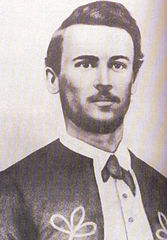
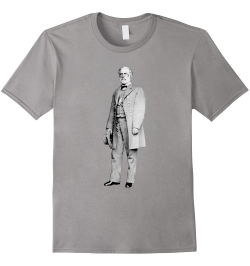
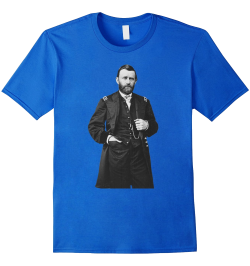

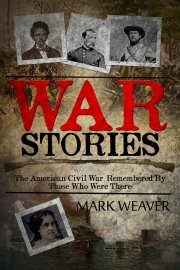
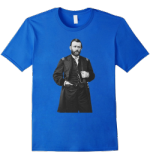
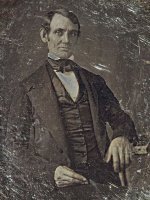
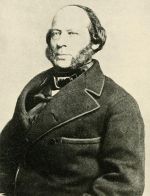
New! Comments
Have your say about what you just read! Leave me a comment in the box below.